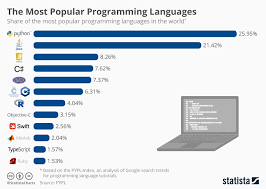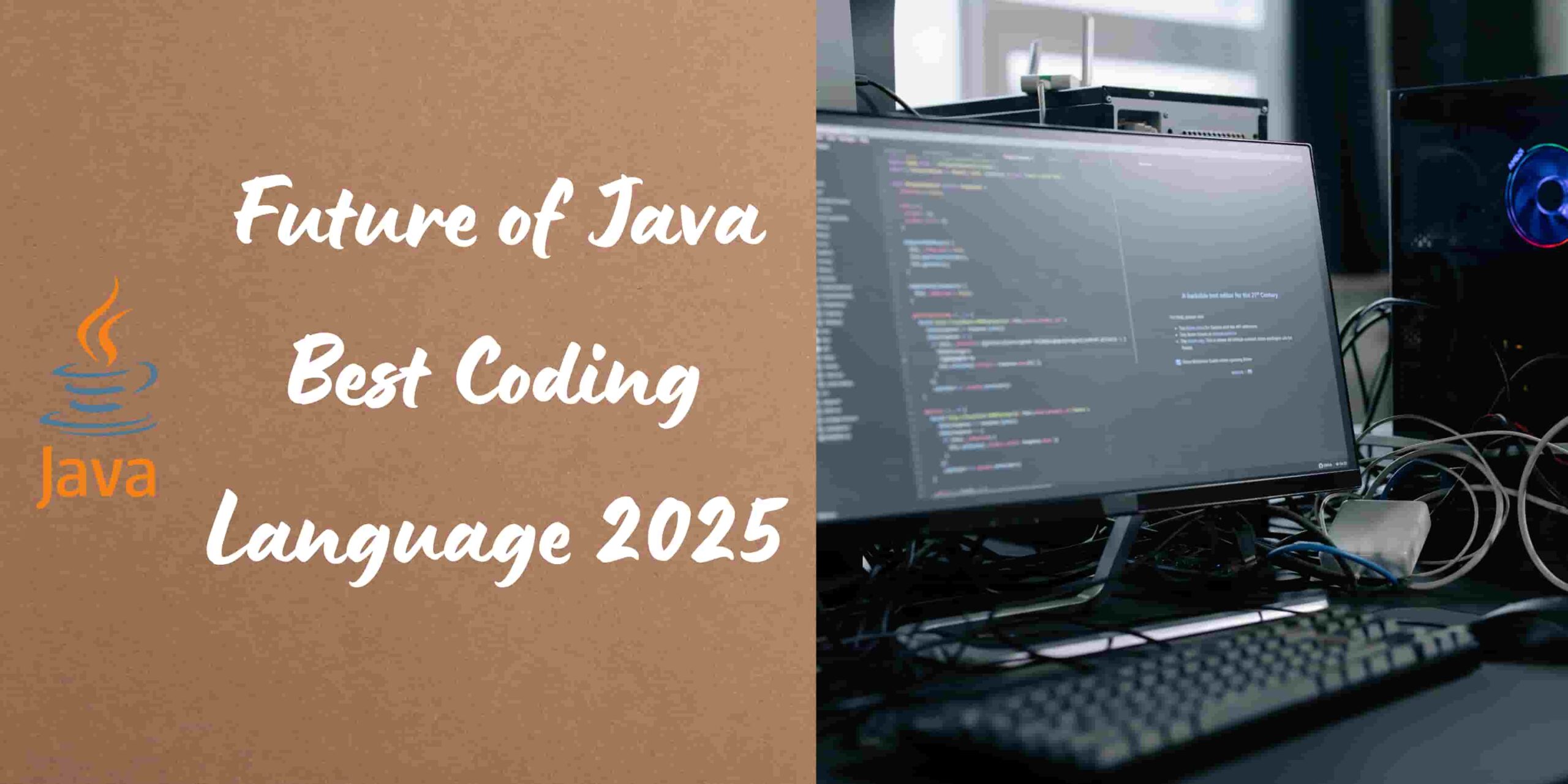What is Future of Java?
Java is a robust, object-oriented programming language that’s been a tech staple since 1995. Known for its “write once, run anywhere” philosophy, Java runs on any device with a Java Virtual Machine (JVM), making it a favorite for everything from mobile apps to massive enterprise systems. It’s like the Swiss Army knife of coding—reliable, versatile, and always ready for action.
In 2025, Java powers over 3 billion devices, from Android phones to banking systems. Its cross-platform magic and strong community keep it thriving, even as newer languages emerge. Whether you’re coding a game or a server, Java’s got your back.
A Brief History of Java
Java was born in 1995, created by James Gosling at Sun Microsystems (now part of Oracle). Originally called “Oak” (inspired by a tree outside Gosling’s office), it was renamed Java after a coffee-fueled brainstorming session. Java’s big break came with its platform independence, letting developers write code once and run it anywhere. From Java 1.0 to Java 21 in 2025, it’s evolved with features like lambda expressions and modules, staying fresh for modern challenges.
Why Java Remains Relevant
Why does Java still shine? It’s battle-tested, secure, and backed by a massive ecosystem. Companies like Google, Amazon, and Netflix rely on Java for scalability. Plus, its community of 10 million developers (per Oracle) ensures constant updates and support. Java’s not going anywhere—it’s like the reliable friend who always shows up.
Java vs. Other Languages
Java faces competition, but it holds its own. Here’s a quick comparison:
|
Language |
Strengths |
Weaknesses |
Best Use Case |
|---|---|---|---|
|
Java |
Platform-independent, secure |
Verbose syntax |
Enterprise, Android apps |
|
Python |
Simple, great for AI |
Slower performance |
Data science, scripting |
|
JavaScript |
Web interactivity |
Browser dependency |
Web development |
|
Go |
Fast, cloud-friendly |
Limited libraries |
Cloud systems, microservices |
Java’s strength lies in its stability and enterprise dominance, making it ideal for large-scale projects.
Read more: What Is PHP and Its Future Best in 2025
Current State of Java in 2025
Java’s thriving in 2025, powering industries from finance to tech giants. Let’s explore its current roles and why it’s still a heavyweight.
Java’s Role in Enterprises
Future of Java is the backbone of enterprise systems, running banking platforms, e-commerce backends, and more. Tools like Spring Boot make Java perfect for scalable, secure applications. Companies like JPMorgan Chase and IBM rely on Java for mission-critical systems, proving its reliability.
Java in Mobile Development
Future of Java powers Android, the world’s most popular mobile OS, with a 70% market share in 2025 (per Statista). From apps like Spotify to games, Java’s Android SDK lets developers create sleek, performant apps. Its role in mobile isn’t fading anytime soon.
Java and Cloud Computing
Java’s adapting to the cloud era. Frameworks like Quarkus and Micronaut optimize Java for cloud-native apps, reducing memory usage and startup times. Major cloud providers like AWS and Azure support Java, making it a go-to for serverless computing.

Future Trends Shaping Java
The future of Java is bright, with trends pushing it into new territories. Here’s what’s next.
Java and Artificial Intelligence
Java’s making waves in AI, thanks to libraries like DeepLearning4J and Weka. It’s used in machine learning for tasks like fraud detection and recommendation systems. Java’s stability and scalability make it ideal for enterprise AI, where reliability is key.
Java in IoT and Edge Computing
The Internet of Things (IoT) is booming, with 15 billion connected devices in 2025. Java’s lightweight JVMs (like Eclipse OpenJ9) power IoT devices, from smart thermostats to industrial sensors. Its security features make it a top choice for edge computing.
Java’s Cloud-Native Evolution
Java’s embracing cloud-native development with frameworks like Spring Cloud and Helidon. These tools support microservices and serverless architectures, aligning with modern DevOps practices. The future of Java lies in faster, leaner apps for Kubernetes and Docker.
Enhanced Java Performance
Java 21 introduced features like virtual threads and pattern matching, boosting performance. Project Loom and Valhalla promise even faster, memory-efficient Java, making it competitive with languages like Go. Expect Java to stay zippy in the future.
Java for Beginners
New to coding? Java’s a fantastic starting point, with clear syntax and endless possibilities. Let’s get you coding for Future of Java!
Getting Started with Java
To begin, download the Java Development Kit (JDK) from Oracle. Use an IDE like IntelliJ IDEA or Eclipse for a smooth experience. Write your first program:
public class HelloWorld {
public static void main(String[] args) {
System.out.println("Hello, Java World!");
}
}This prints “Hello, Java World!” to the console. Congrats, you’re a Future of Java for Future of Java coder!
Basic Java Concepts
Master these building blocks:
-
Variables: Store data like numbers or text (int age = 25;).
-
Methods: Reusable code blocks, like functions.
-
Classes: Blueprints for objects, Java’s core feature.
-
Loops: Repeat tasks (for, while).
-
Conditionals: Make decisions (if, else).
Here’s a simple loop:
for (int i = 1; i <= 5; i++) {
System.out.println("Count: " + i);
}Building Your First Java App
Try a basic calculator in Future of Java:
import java.util.Scanner;
public class Calculator {
public static void main(String[] args) {
Scanner scanner = new Scanner(System.in);
System.out.println("Enter two numbers:");
double num1 = scanner.nextDouble();
double num2 = scanner.nextDouble();
System.out.println("Sum: " + (num1 + num2));
scanner.close();
}
}This app adds two numbers. Start small, dream big for Future of Java!

Advanced Java in the Future
Ready to level up? The future of Java includes advanced techniques for cutting-edge projects.
Microservices and Java
Microservices break apps into small, independent services. Java’s Spring Boot and Quarkus excel here, offering fast, scalable solutions. For example, Netflix uses Java microservices to stream to millions. Expect more companies to adopt this in the future.
Java Frameworks to Watch
Keep an eye on:
-
Spring Boot: Simplifies enterprise apps.
-
Quarkus: Optimized for cloud and Kubernetes.
-
Micronaut: Lightweight, fast-starting apps.
-
Jakarta EE: Enterprise-grade solutions.
These frameworks ensure Java stays relevant for modern architectures.
Java and Security Trends
Security is critical in 2025. Java’s robust features, like its sandboxed JVM, protect against vulnerabilities. New tools like GraalVM enhance security for cloud apps. The future of Java includes tighter cybersecurity, vital for IoT and finance.
Challenges Facing Java’s Future
Java’s not perfect. Here are hurdles it faces:
Competition from New Languages
Languages like Go and Rust offer speed and simplicity, challenging Java’s dominance. Python’s AI popularity also draws beginners. However, Java’s ecosystem and enterprise trust keep it competitive.
Adapting to Modern Demands
Java’s verbose syntax can feel clunky compared to Python’s elegance. Projects like Amber aim to streamline Java, but it must keep evolving to stay relevant in the future of Java.
Read more: Top 10 programming languages in 2025
Tips for Learning Java
Mastering Java is like learning to bake—start simple, practice daily, and enjoy the results. Here’s how:
Best Resources for Java
-
Oracle Java Tutorials: Official, beginner-friendly guides.
-
freeCodeCamp: Free Java courses.
-
Baeldung: In-depth Java tutorials.
-
YouTube: Channels like Programming with Mosh.
Joining the Java Community
Connect with coders:
-
X: Follow #Java for trends.
-
Reddit: Join r/java for advice.
-
Stack Overflow: Ask and answer questions.
-
Java User Groups: Attend local meetups.
Fun Java Projects for All Ages
-
To-Do List App: Practice classes and user input.
-
Text Adventure Game: Use conditionals and loops.
-
Budget Tracker: Handle data with objects.
-
Android App: Build with Android Studio.
Here’s a simple game loop:
public class Game {
public static void main(String[] args) {
int score = 0;
while (score < 10) {
System.out.println("Score: " + score);
score++;
}
System.out.println("Game Over!");
}
}FAQs About the Future of Java
What is the future of Java in 2025?
Java remains strong in enterprise, cloud, and Android development. With updates like virtual threads and frameworks like Quarkus, the future of Java looks bright for AI, IoT, and microservices.
Is Java still worth learning?
Absolutely! Java powers 3 billion devices and dominates enterprise apps. Its versatility, community, and constant updates make it a valuable skill for beginners and pros alike.
Can Java be used for AI?
Yes! Libraries like DeepLearning4J and Weka enable Java for machine learning. Its scalability makes it ideal for enterprise AI, ensuring a role in the future of Java.
Will Java be replaced by newer languages?
Unlikely. While Go and Rust compete, Java’s ecosystem, enterprise trust, and updates like Java 21 keep it relevant. The future of Java is about adaptation, not replacement.
How long does it take to learn Java?
Beginners can grasp Java basics in 3–6 months with daily practice. Advanced skills, like microservices, take 1–2 years. Projects like apps accelerate learning.
Read more: Top 10 Future Programming Languages for 2025
Conclusion
The future of Java is as vibrant as ever. Powering 3 billion devices, from Android apps to enterprise systems, Java’s adaptability keeps it relevant in 2025. Trends like AI, IoT, and cloud-native development ensure Java’s place in tomorrow’s tech. Whether you’re a kid coding your first app or a professional building microservices, Java offers endless opportunities. Start with simple projects, tap into free resources, and join the global Java community. Ready to shape the future of Java? Share your thoughts in the comments and let’s code the future together!

